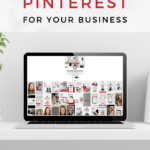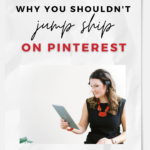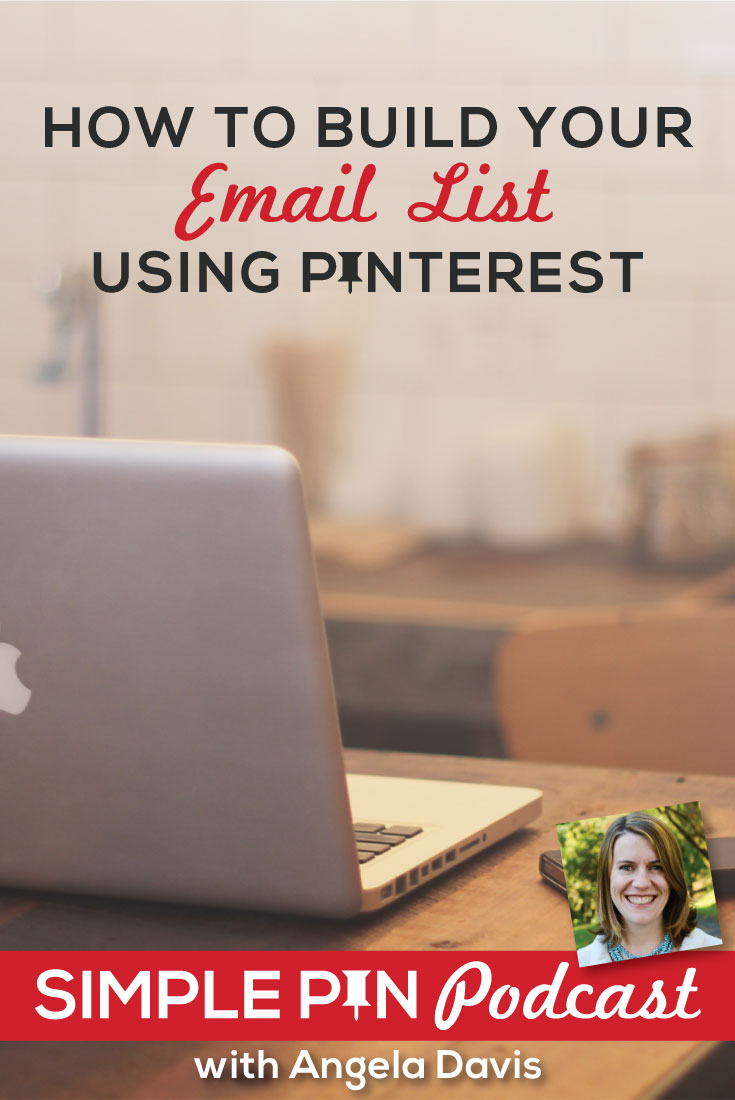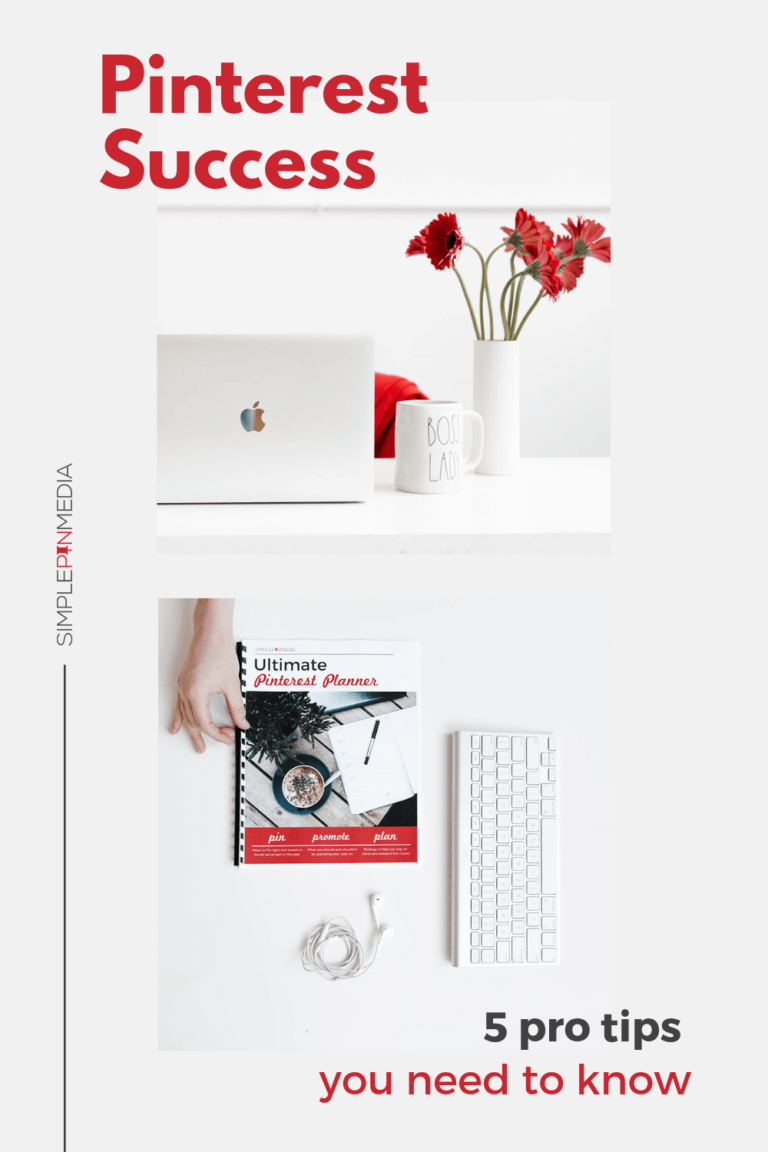In today’s podcast episode, I’m going to try hard to convince you to not jump ship on Pinterest in 2023. And explain how I know it can be working for your business. As a company, we made some hard decisions towards the end of 2022 – we cut hours, team members, projects, and time we spent on platforms.
But once we spent a little time with the data in 2023, we strategically re-introduced some things. Not based on emotion, but based on data and solid proof around what was working and not working.
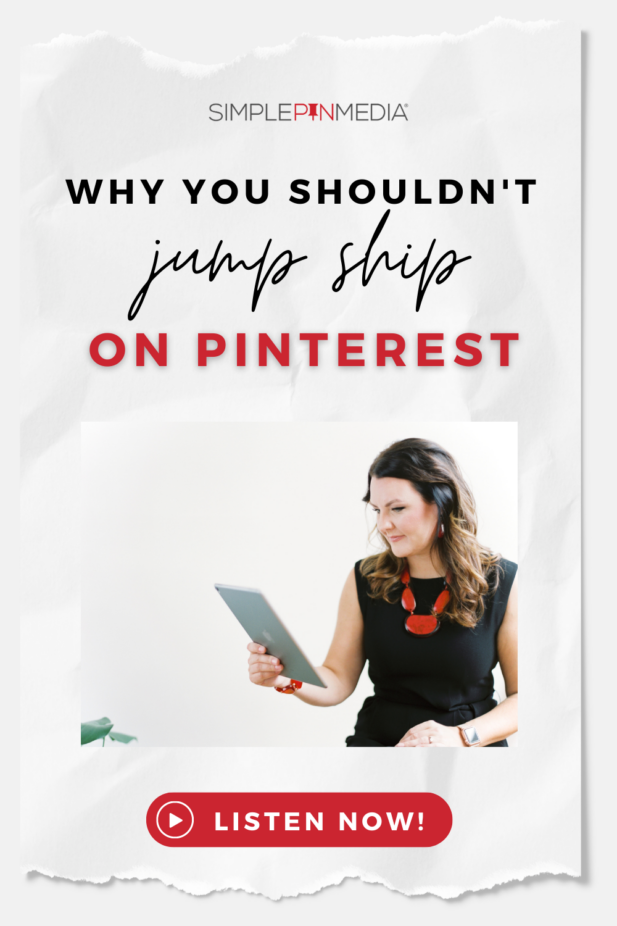
Let’s walk through something first
2022 was hard, especially the second half of the year. A lot of business owners got hit really hard, like “watched all our income decrease” hard. At least for me and Simple Pin, we felt backed against a wall.
Thinking emotionally, it feels like sweeping cuts across the board are the only way to go.
We had really just started investing in YouTube as a company. We knew it would take some time to get off the ground, and towards the end of the year, it wasn’t bringing in clear revenue. It felt to me like it was the thing that had to go.
Our social media manager, Tabby, had been working so hard on getting the platform up and running. And she was GOOD at it. Engaging, fun, knowledgeable. We were starting to see some traction. So cutting the platform, even temporarily, felt really tough.
Fast forward to January of 2023
We did a full level-set on all of our numbers. Pulling back from emotion, we looked at hard data. Where is our time and energy going on social media, and where are we making the most impact?
Here at Simple Pin, our core engagement and traffic driver is the podcast, which gets converted into a blog post, optimized for SEO. Our workflow over the past 7 years hasn’t changed, and because we see the SEO value, this won’t change.
When we look over at social media and how we’re promoting our content, this is where we really have to take a hard look.
Why Pinterest?
For us, Pinterest is (and has been) consistently number one. It brings us the most traffic by far out of all the platforms.
Our most important metric is a click over to our website, because we know once we get them to our site, we can convert them to our email list. And our email newsletter is a consistently high performer for us, in sales, traffic, and referrals.
As long as we’ve been tracking our numbers, Pinterest has been our number one traffic driver. So we won’t be pulling back from our efforts on the platform any time soon.
What comes after pinterest?
Facebook is number two for us, but we believe this is mostly because we used to have a really active Facebook group. We also had a membership that was housed on Facebook, so that helped drive traffic. We aren’t actively putting efforts into the platform or running ads right now, so we just left that as is.
Moving to our next top platforms, Instagram and YouTube were TIED for number of clicks.
We have been hustling on Instagram. Spending tons of time and creating tons of content. YouTube was fairly new to us, and while it was taking time to create and edit the videos, we had been at it for far less time. And it was bringing us the same amount of traffic as a platform that we’d poured years of our time into.
We’d been at YouTube for five months at this point.
We went back to the drawing board and looked at how many hours we were spending as a team on each platform, and what kind of return we were seeing.
While we knew it would take some time to see a true return on investment with YouTube, based on the small amount of data we had, we knew it was worth it.
This is really similar to how we recommend looking at Pinterest.
If you’ve never used the platform or never really put a ton of specific time into it, it can feel like nothing is happening. It can truly take 6-9 months to see a solid return.
The last platform we looked at was LinkedIn. If you’ve listened to the podcast or been a follower of Simple Pin for awhile, you know that I HATED LinkedIn. I couldn’t figure it out, I couldn’t see the value.
Neil Schaffer was on the podcast over the summer and was really trying to convince me to use the platform. I finally made the leap and now spend almost every day over there. Once I dove in, I found that I can actually learn quite a bit about marketing over there. I can see and talk to people in different industries, and make closer connections with some of our clients (and potential clients). seeing people in different industries and I am eating my words.
Where are we spending our time?
So as a company, we’re putting a limited amount of time into Instagram and Facebook, I’m spending time on LinkedIn, and the bulk of our “social media” time is going to YouTube and Pinterest.
We’ll track this monthly and quarterly, just to make sure we’re on the right track. And if not? We change things up. We look at the data and we move our time and hours around.
And that’s what I encourage you to do. After you’re done listening (or reading), go check out your Google Analytics. Look at your referral traffic and see what the breakdown looks like. Make some data-driven decisions about how you or your team will spend your time.
Where to look for data
Looking inside Google Analytics, this is where you’ll find your referral traffic:
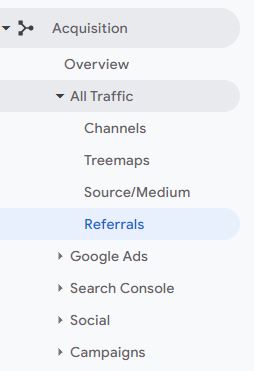
For us, and honestly most of our clients, Pinterest is one of the highest traffic drivers out there. Sometimes THE highest. Most of the time second only to Google traffic.
This could be other platforms for you, or you’re possibly using other platforms for different reasons. Some use Instagram because they’re doing sponsored content, and that makes perfect sense. If you’re getting paid to do campaigns on Instagram, obviously you should do it.
But if your goal is getting potential customers, clients, or readers back to your website, Pinterest should be high on your list.

Should you take a risk?
But with most platforms, keep in mind that this is a time investment. Especially if you aren’t seeing a ton of traffic right now, this can feel risky. Choose the top 1-2 platforms you feel are the best fit for your business and take the risk.
We recognize that risks don’t always pay off. But any time we’re in a season where the economy feels shaky, or things just feel unpredictable, the best we can do is make data-based, rational decisions. Emotion can lead us one way, but it’s often not the best indicator of success.
Check your data before you make a gut decision. Or if you’ve made your gut decision (like me), come back around, look at the data, and level set based on your true numbers.
We’d love to hear from you! Does any of this resonate? Are you working through tough decisions on where to spend your time? Leave a comment on this blog post or send us a DM on Instagram.
And feel free to share this blog post or podcast with any business owner you know who is feeling overwhelmed.
Additional Resources Covered in Podcast:
Simple Pin Products and Resources:
- Why Pinterest? (YouTube video)
- Simple Pin Chronicle (12 months of seasonal keyword ideas + Pin templates)
- LinkedIn – Simple Pin Media
